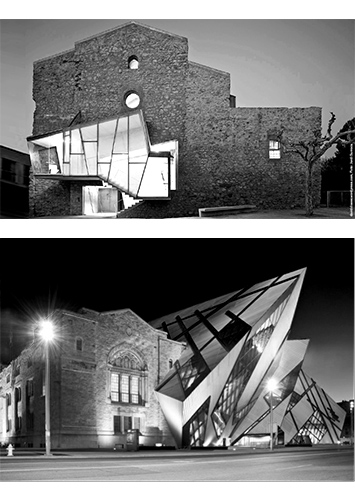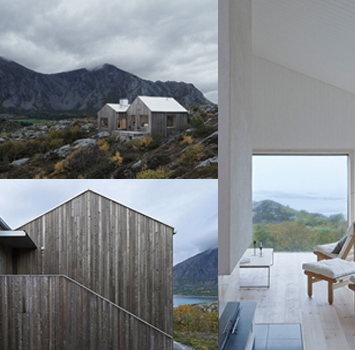

On the conflict of old and new architecture
As written in the article by Francisco de Gracia; ‘’since the debates of modernity, the problem of how to build on the built has been an open theme of discussion, both with regard to the scale of buildings and in terms of the city.’’ What impact do we want modern architecture to leave on our traditional way of building things? And how can we best adapt to what is already built?

Read the article of Francesc De Gracia; The dilemma of ''building on the built'' her.


Vega Cottage by Kolman Boye Architects
References weathered Norwegian boathouses
Blance
This house resembles the weatherbeaten boat-houses that are skattered along the coastline in Norway. The traditional sheds, also known as Naust, are common to Norway's. The architects decided to pay tribute by creating a small residence that resembles a pair of cabins.
The typografi of the plot is an uneven terrain of a rocky hills/mountains near the coastline. "The site is distinctive for its grand and harsh northern landscape with wide panoramas of the Norwegian Sea and the jagged mountains rising from it," said the architects. As a result of this the house appears to be completely cut off from any other traces of civilization. "The interior is kept subtle with a character of being hand-built, promoting tactile qualities and the attractive patina developed over time," This is a perfect example of the balance between traditional architecture and modern architecture.

Old is new again
We love order in building, new freshly planes, pristine and perfect for new structures. Yet we find ourselves drawn to things that are not so flawless, Recycled, repurposed, previously loved and salvage. Buildings that have a previous life carry a character that brand-new ones just cannot master. If you follow this link you can read about this type of architecture.
The page also lets you enter more links to read more about special projects or architecture offices. You can foreksample read and see pictures from The Sant Francesc convent, located in the small Catalan town of Santpedor, was built in the early 18th century by Franciscan friars. the church remained standing, but in a completely ruinous state. The project was aimed to convert the church into an auditorium and a multifunctional cultural facility.